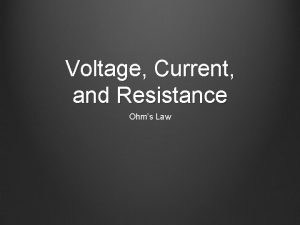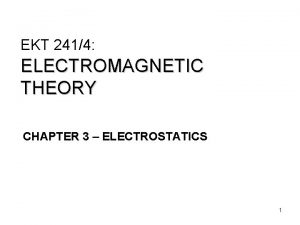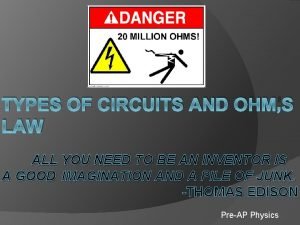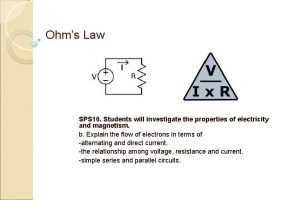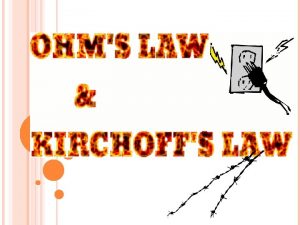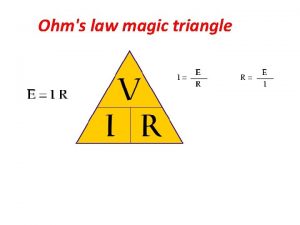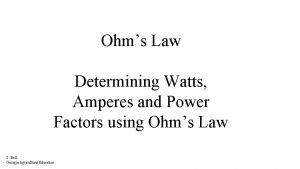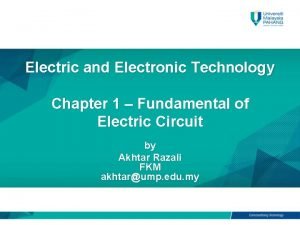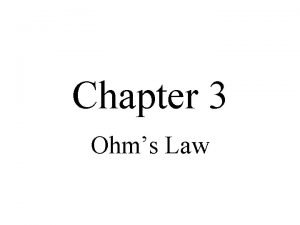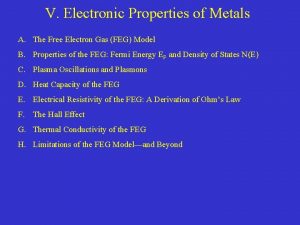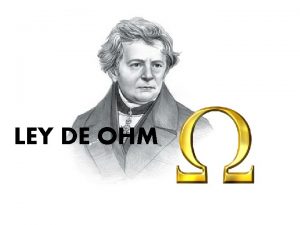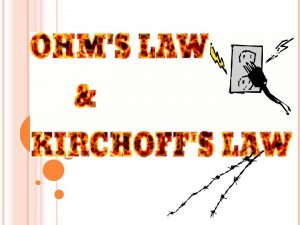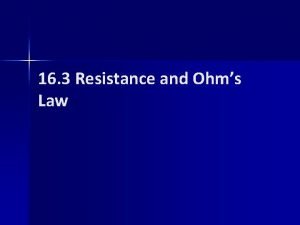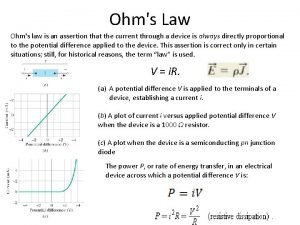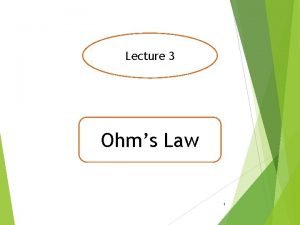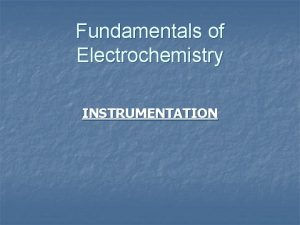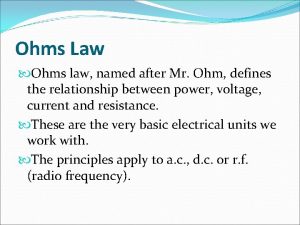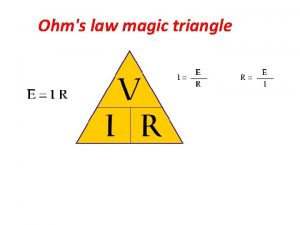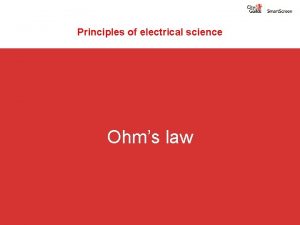Recall Recall Ohms Law The current in an













- Slides: 13


Recall:


Recall: Ohm’s Law The current in an ohmic conductor is proportional to the voltage across it, provided that the temperature and other physical conditions are kept constant. V=R×I R is the resistance, measured in ohms (Ω).

Equivalent resistance R 2 R 1 R 3 R 4 R 5 R 6 RT R 7 When designing or analysing circuits, complex combinations of resistors are common. To perform calculations, for example to find a suitable fuse to protect the circuit, it is easier to use a value for the total resistance of the circuit, RT. RT can be called the equivalent resistance because it is the single resistor that is equivalent to the complex combination.

Resistors in series To work out the equivalent resistance of resistors in series, the resistor values can just be added together: 10 Ω 20 Ω equivalent resistance = 10 + 20 + 15 = 45 Ω In general for a number of resistors, n: RT = R 1 + R 2 + … + R n 15 Ω

Resistors in parallel To work out the equivalent resistance for resistors in parallel, a more complex equation must be applied: 1 RT = 1 R 1 + 1 R 2 + … 1 + Rn For example: 1 RT 10 Ω 1 RT 20 Ω 15 Ω 1 RT RT = = 1 10 + 1 20 + 1 15 6+3+4 60 13 60 60 13 Ω = 4. 62 Ω

Resistor combinations

Kirchhoff’s first law The German physicist Gustav Kirchhoff established two laws which help us to understand the function of electric circuits. Kirchhoff’s first law states that: The sum of the currents leaving any junction is always equal to the sum of the currents that entered it. This law is based upon the idea of the conservation of charge: no charge can be lost or made in a circuit. I IN Thus the sum of the currents at a junction should be zero. IIN = I 1 + I 2 … + In ΣI = 0 I 1 I 3 I 2


The energy in a circuit What happens to the energy supplied to a circuit? Batteries and power supplies supply electrical energy to a circuit. Devices within the circuit change this energy to other forms: bulbs produce heat and light, resistors produce heat. What is the conservation of energy? Energy cannot be created or destroyed. All of the energy provided by a power supply must be used by the circuit. How does the voltage of a battery relate to the voltage measured across the devices in a circuit? Voltage is the energy transferred to the charge in a circuit. The battery’s voltage is shared between the components, which changes this energy into different forms.

Kirchhoff’s second law is based upon the law of the conservation of energy. It states that: The total voltage across a circuit loop is equal to the sum of the voltage drops across the devices in that loop. Essentially, the energy you put into the circuit equals the energy you get out of each circuit loop. An equation can be produced for each loop in a circuit. For example: VIN = V 1 + V 2 VIN = IR 1 + IR 2 VIN I V 1 V 2 R 1 R 2

Further uses for Kirchhoff’s law Use Kirchhoff’s laws to find the values for each current. E = 12 V V 1 10 Ω V 2 100 Ω V 3 40 Ω As I = V R I = 1. 6 A I 1 l There are 3 loops in the circuit. Each has a voltage drop equal to the input voltage according to the 2 nd law. Therefore: E = V 1 = V 2 = V 3 I I 2 l The 1 st law means that current entering each junction equals the current leaving. I 3 I= Therefore: I = I 1 + I 2 + I 3 12 10 + 12 100 I 1 = 1. 2 A + 12 40 I 2 = 0. 1 A I = 1. 2 + 0. 12 + 0. 3 I 3 = 0. 3 A
 Https //phet.colorado.edu/en/simulation/ohms-law
Https //phet.colorado.edu/en/simulation/ohms-law Point form of ohms law
Point form of ohms law Types of circuits
Types of circuits Ohms law resistance
Ohms law resistance Ohm's law states that
Ohm's law states that Ohm's law power triangle
Ohm's law power triangle Ohms pie chart
Ohms pie chart Ohms law emf
Ohms law emf Electric circuit definition
Electric circuit definition Ohm's law introduction
Ohm's law introduction Ohm's law and electric power worksheet answers
Ohm's law and electric power worksheet answers A certain light bulb
A certain light bulb Ohms law derivation
Ohms law derivation Ohms law
Ohms law
